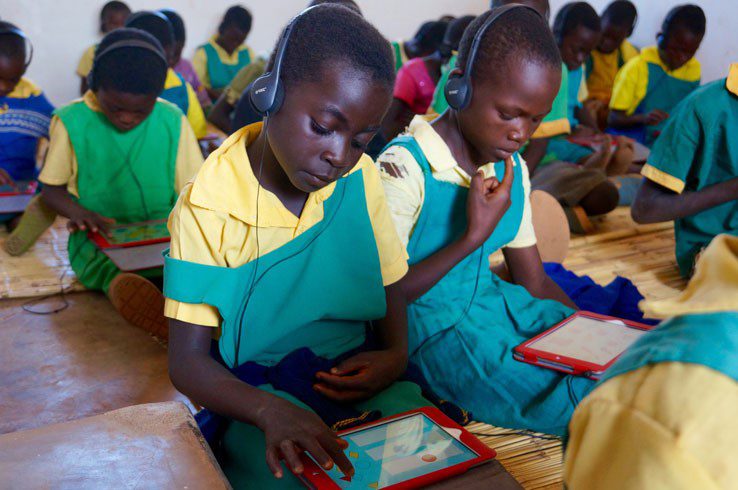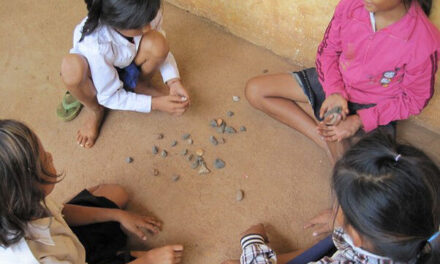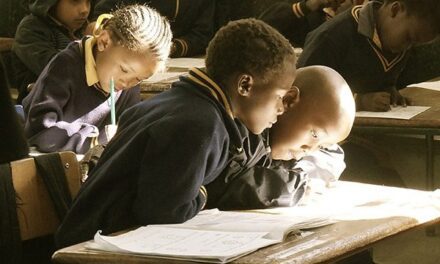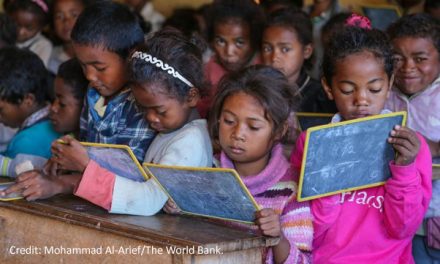This blog was written by Foster Gondwe, Lecturer at the School of Education, University of Malawi, and currently a PhD student at Hiroshima University, Japan.
Preamble
To join global efforts in curbing the spread of COVID-19, the Ministry of Education, Science and Technology (MoEST) in Malawi closed all schools, colleges and universities from Monday, 23rd March 2020. According to the ministerial statement, this decision has put over 5.4 million adults, children and youth out of school. A month later, the Government was prompted to implement an Online and Distance Learning (ODL) package to ensure continued learning in the absence of schooling. Historically, ODL is not a new phenomenon in the country but COVID-19 has led to an unprecedented policy intervention focused on distance learning in the manner it has yet to be rolled out in. From a researcher’s point of view, this article maintains that the ODL package in the aftermath of COVID-19 offers a learning curve for clarifying the conceptualisation of Information and Communication Technology (ICT) integration into resource-constrained education contexts like Malawi.
The context
Despite making strides in improving access to education, Malawi still faces systemic challenges to deliver quality education across all levels. A 2016 World Bank report and the 2018/2019 Education Sector Performance Report show that some of the persistent challenges include high pupil-to-qualified teacher ratios (PqTR), high pupil-to-classroom ratios, high repetition, poor transition from primary to secondary level of schooling, and inadequate teaching and learning materials. In primary education, repetition rates for both boys and girls have been perpetually high, exceeding the target of 10% by 2018.
The Education Management Information Systems (2014-2018) indicate that the pupil-to-qualified teacher ratio (PqTR) has remained at 70 or above, exceeding the recommended ratio of 60. The ratios tend to be higher between various schools and different classes within the same school. According to a JICA report, one reason for this trend is that, because of free primary education introduced in 1994, there has been a rapid rise in enrolment at that level, from 1.9 million in 1994 to 4.2 million in 2011, with an accompanying rise in the secondary education enrolment from 54,000 in 2003 to 387,569 in 2018. This trend also reflects on teacher supply in secondary education; for example, in 2017 over 47% of secondary teachers were unqualified.
Meanwhile, in policy documents such as the National Education Sector Plans, the Government recognises the potential of ICT such as computers and the internet in improving the access, quality and management of education systems. In practice, several educational ICT projects have yielded positive results, including raising literacy and numeracy learning outcomes in the primary school (for example, the Unlocking Talent Project by Voluntary Service Overseas, VSO).
Additionally, there is evidence that Online and Distance Learning is making higher education more accessible to Malawians.
However, ODL— particularly the use of ICT—is still in infancy, and therefore remains an area in need of clear understanding by all stakeholders. For instance, in a recent study Frank Mtemang’ombe found that, “the efforts by the various ICT interventions providers are unguided and unregulated, and the process of conceptualising and implementing the ICT interventions in primary education is still in a form of experimentation, being led by the interventions providers rather than the Ministry of Education”.
Questions for the current ODL in Malawi
The following are some of the uncleared questions about educational ICT interventions in the context of Malawi.
If ICT is the solution, what is the problem?
Teachers and educators use (or fail to use) ICT for various reasons. Whatever the intentions they have for using ICT in their work, the standard practice is that ICT will bring benefits of some kind, especially to the learning process and outcomes. Therefore, while the country celebrates various educational ICT projects, the real question is: what educational problems is ODL expected to solve? In other words, the use of ICT ought to target something educationally desirable.
Does the way we talk about “using ICT in education” matter?
The talk about ICT in education tends to portray those who do not use ICT (especially teachers) as ‘backward’. For instance, the media and research reports have labelled ICT non-users as ‘digital immigrants’. Certainly, these labels can put unnecessary pressure on those we expect to use ICT for educational purposes. An alternative view is that, as observed by the country’s Principal Secretary for Education, we should understand that “by using ICT in education, it does not mean that traditional classroom teaching methods are being replaced”. A related narrative is that the country is not ready for ODL, mainly because of the challenges such as inadequate ICT infrastructure (especially in the rural areas), underdeveloped research and development capacity in ICT, and inadequate specialised ICT professionals and institutional capacity (National ICT policy, 2013). However, what is at stake with such a deficit approach to educational development is that it overlooks what is possible within the same resource-constrained education context.
What does ‘ICT use in education’ mean in Malawi?
There appears to be a lack of common language regarding ICT use in education. This is evident in media outlets, research reports, policy documents and conversations with students and teachers. As reported elsewhere in the literature, “the term technology has come to mean everything and everything has come to mean technology and so the term technology threatens to become a cliché’ or to mean nothing.” In Malawi, the ICT for development policy (2006) envisions different ways of using ICT, including ‘e-teaching’, ‘e-learning’, ‘e-distance education’, ‘distance education’ and others. These terms might be obvious to those with a technical background in the field. However, the terms certainly pose a challenge for practitioners; for example, one would wonder what makes a teaching/learning resource technological.
Who are the real beneficiaries of ICT use in education?
In Malawi, educational ICT interventions are mostly donor-supported projects, involving multiple players, such as international development agencies, politicians and telecommunication companies. The plurality of stakeholders also means varied interests, although the message from all stakeholders is that they intend to improve the quality of education. However, commenting on whether technology would make schools smarter, Chen, Souraya and Wohlleben observe that the “alarmism about education technology often romanticizes teaching, is sometimes ill-informed, and usually unwarranted…” They add that, “The alleged revolution of technology is often nothing more than a mild reform advocated by who are indeed not necessarily education experts but often programmers, salespeople, or venture capitalists who wish to do good with their insights and their capital.” These criticisms against ICT in education are yet to be understood in most developing countries like Malawi.
The ODL package following COVID-19
MoEST has partnered with local and international agencies such as UNICEF, Save the Children Fund, VSO and NEPAD. This consortium is developing innovative solutions to keep children busy with lessons while at home. The solutions include radio, television, printed materials and online. For instance, the Ministry has already put in place learning materials for the first two years of secondary school, available on the Commonwealth of Learning platform. A local Telecom company (TNM PLC) has also offered to provide free access to online education content to students in the country.
Below is a verbatim extract of the implementation plan:
- All students from Form 1-4, will be able to access lessons through the ministry’s website; education.gov.mw where the lessons have been uploaded at no data cost.
- The ministry is working with several players that include Malawi College of Distance Education (MCDE), Malawi Digital Broadcast Network Limited (MDBNL), Padziwe and other media houses in developing television content as a way of reaching out to those who would prefer education content through television. VSO International will provide 10, 000 tablets starting with an initial 1,000 tablets that will be provided to primary school learners in rural areas complete with solar charging.
- The ministry is developing radio lessons through the MCDE that will cover the primary school sector. These will be lessons that will bring the teacher directly interfacing with the learner through the radio programmes.
- The lessons will be aired on the Malawi Broadcasting Corporation (MBC) and other radio stations, with a detailed schedule providing actual broadcast times provided by the ministry of education.
- A special appeal to parents and guardians, to monitor and guide their children and dependents, as there will be no physical teacher to guide the students like it is in a classroom situation. The ministry also called upon all stakeholders, Education Managers (Division and district), Civil Society Organizations, Faith Based Organizations, Development Partners, Political Leaders, Academic Institutions, and Communities to follow necessary guidance to participate in all the interventions and ensure continuity of learning and transition from school closure to re-opening.
Concluding thoughts
On paper, the ODL package seems to be guided by principles of equitable access, partnership with various stakeholders, and achieving learning as the end goal. The policy statement has also set in motion the public discussion concerning the possibility of such a large-scale out-of-school learning intervention. For instance, debates on social media have centred on lack of adequate consultation before coming up with the ODL policy decision, and the likelihood of achieving ODL in a resource-constrained country like Malawi.






A good paper…I think covid-19 has taken the Malawi government unwares with regards to the integration of ICT in the education system. But this is a jam-start and requires alot of work to be done. Both teachers and learners will have to be trained on how ICT can be used in lessons. Alot of resources will be needed as well for this to be effectively done. Rural areas that are not electrified and do not have access to internate may be greatly affected.
Good job Foster Gondwe! I love it that Malawi has adopted online learning to proceed lessons for learners during this pandemic period. My opinion, the ministry of education need to set up a special course for parents and guardians. Collect different ideas on how parents and guardians can provide effective support for their children. The fact that Malawi’s literacy level in Malawi is low, most parents and guardians won’t understand what online learning means. Recommendation; train young people via social media to help collect information (analyze the progress of ODL) about how this ODL can best be implemented in Malawi especially those vulnerable learners.
The article did not mention much about private schools. But it is my hope that they also adopt same measures so that learners keep learning online.
Great piece of work Mr. Gondwe.
This is really an appropriate development this time. Apart from need to sensitive parents and guardians, teachers too need the training as many children and the youth are very fast learners in ICT leaving their teachers behind. So yes times have changed and need for overhaul is paramount.
Moses Bokosi